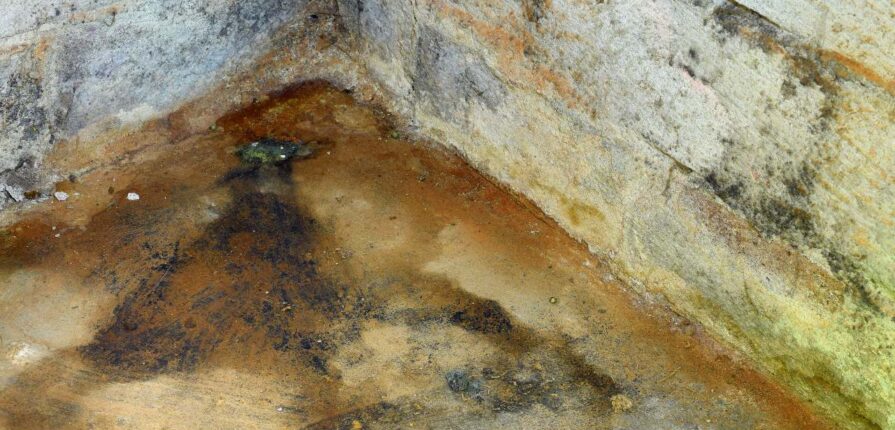Floor Damp problems often have less awareness than damp problems in walls because they can be more difficult to spot. Unlike walls which are always at eye level, stains, cracks, and paint bubbles can quickly be spotted once they start to appear. However, the same cannot be said for floors that are not always in your line of sight without obstructions.
Issues like water leaks water leaks under the floor will go unnoticed if you are unable to see or feel the damage being caused. Carpets, rugs, and furniture will quite easily mask a damp floor problem in a home or commercial property.
In some outdoor areas, visible signs of floor damp can often be considered normal in certain situations. People may appreciate the seriousness of the problem or assume it will dry out naturally.
Damp Proof Flooring
The process of treating damp floors is more involved than wall treatment particularly where the problem has been left for a long time without any attention. As with all damp problems, you first need to find the source and then identify the direction of travel. Concrete floors that most buildings are built on are highly susceptible to floor damp damage when subjected to moisture which can easily travel through the material.
Damp in Concrete Floors
Concrete itself is a porous material in which moisture and liquid can easily be absorbed which is what ultimately causes damp to spread. Not only does it affect the floor itself, but as the floor damp travels, it can reach walls leading to Rising Damp. This often then places the focus more on the walls than the source of the damp in the floor.
Typically, damp floor damage will be the result of penetrating damp rising from the ground beneath the concrete. Damp specialists commonly find many instances of existing damp-proof membranes failing or not being present at all.
Damp can easily spread to the visible floor coverings like carpet and wood or laminate flooring resulting in severe damage like warped floors.
Causes of Damp Floors
Qualified damp specialists will have experience dealing with different causes of floor damp in properties. Specialists will understand what can have both a positive and negative effect on damp problems.
Changes to the natural environment around properties such as building driveways by removing greenery and trees can have a negative impact. Trees naturally absorb moisture from the ground, so the removal of trees can leave an excess of groundwater. Rising moisture will eventually be too much for existing preventative measures leading to moisture ingress.
The most common causes of floor damp include:
Poor Drainage
Inadequate drainage around the foundations of your building, or other ineffective drainage can cause buildups of moisture that cannot escape. Heavy rainfall that is poorly drained from the roof can force excessive water into the ground and cause flooding.
Clogged Gutters
Similarly, gutters that are blocked with leaves or other items can cause water to overflow and not be properly drained creating pools of water that can cause unplanned stress to the ground area.
Appliance Leaks
Commonly kitchen appliances or bathrooms in ground floor rooms can often be the cause of water leaks. Washing machines and radiators that are services can leak excessively in areas that are not well suited to handle water.
Problems such as total flooring failure and breakdown of seals and moisture barriers are the main risk of these common causes.
Identifying the signs of Floor damp
While concrete itself is an incredibly durable and strong material highly suitable for floors its composite base of cement and water results in a highly porous material with spaces or pores that allow water to penetrate.
A situation known as capillary action then exacerbates the situation by allowing liquids to flow upward through narrow spaces like gravity. Poor drainage combined with degraded or lack of sealing ultimately gives access to moisture over time.
Water stains & Discolouration
Look out for visible discolouration and stains or marks on the floor. They will appear darker than the majority of the floor and will form shapes. These shapes can also identify the direction and source of the moisture or water leak.
Musty Smells and Odour
Damp rising through the ground into concrete and other covering materials will always result in a noticeably unpleasant smell. A musty smell is highly associated with mould and noticing it can suggest a localised area has been affected by mould or mildew.
Damaged Warped Flooring
The condition of the visible floors in your property will be the easiest sign to notice the potential of damp growth. Moisture can have a dramatic impact on laminate and wooden flooring causing the slates to buckle. Shape irregularities such as pockets of bubbles affect the level and surface of the floor are early warning signs.
Cracks in the Floor
Visible cracks, holes, or other broken areas in the floor can be early entry points for ground moisture to enter the materials in the floor and make their way to the surface levels. The cracks themselves appear when the moisture is moving through materials causing damage through hairline or larger cracks.
Damp Floor Treatment
A damp specialists will complete a comprehensively damp survey inside and outside of the property. This is the first step that should be taken at the earliest possible opportunity.
Once they have effectively diagnosed the problem and discovered the causes, they give advice on the best solutions to the damp problem on your floors. Damp proofing treatment will depend on the specific factors identified within the damp report provided after a survey.
Damp Concrete Floor Membrane: A structural membrane is applied to the Floor by our specialists.
Expoxy Resin: Resin coating applied to the floor surface is a simple process to prevent damp.
Damp Floor Coating: Damp proof coating can be applied with a roller across the entire flood surface.
Call on 020 4542 6114 or email us if you believe we can be of assistance.

